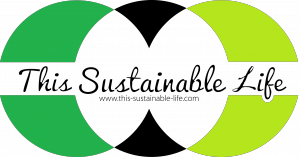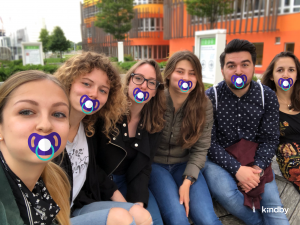Kreislaufwirtschaft als Treiber der Sustainable Development Goals
Wie das Europäische Kreislaufwirtschaftspaket nachhaltiges Produktions- und Konsumverhalten fördert und fordert
Im Jahr 2015 verabschiedeten die Vereinten Nationen globale Ziele für nachhaltige Entwicklung, die sogenannten Sustainable Development Goals (SDGs). Dabei handelt es sich um 17 Ziele, die auf mehr als 150 spezifischen Unterzielen beruhen. Die SDGs befassen sich mit den Auswirkungen unseres globalen wirtschaftlichen Wandels und verfolgen dabei einen umfangreichen Multi-Stakeholder-Ansatz.
Kreislaufwirtschaft trifft SDG#12
Befasst man sich mit dem Thema Kreislaufwirtschaft sticht ein Ziel heraus: Das SDG#12: „Nachhaltige Konsum- und Produktionsmuster sicherstellen“ beschäftigt sich mit der Überwindung des Dogma „Produzierens, Konsumierens und Wegwerfens“, welches seit der industriellen Revolution gelebt wird, und stellt einen positiver Wandel für Wirtschaft, Gesellschaft und Umwelt in den Mittelpunkt des Handelns.
Verschiedene Untersuchungen, u.a. von der Ellen MacArthur Foundation, belegen, dass Kreislaufwirtschaft viel zu dieser Agenda des SDG#12 beitragen kann: Die Umsetzung des Kreislauf-Modells in Europa könnte bis 2030 einen jährlichen Nettonutzen von 1,8 Billionen EUR erzielen. Des Weiteren hätte die Kreislaufwirtschaft in den Bereichen Mobilität, Infrastruktur und Ernährung das Potential die CO2-Emissionen bis 2030 im Vergleich zum heutigen Niveau zu halbieren. Vor allem in der Landwirtschaft könnten durch die Optimierung von Nährstoffkreisläufen weitere Ziele der SDGs unterstützt werden wie der Erhalt der Artenvielfalt, die Einschränkung des Wasserverbrauchs und der Nährstoffversorgung. So könnten landwirtschaftliche Abfall- und Nebenprodukte genutzt werden, um Energie zu produzieren und den Verbrauch an chemischen Düngemitteln zu senken.
EU Aktionsplan in Kraft getreten
Die EU-Kommission verabschiedete 2015 das Kreislaufwirtschaftspaket, welches einen Meilenstein im Bereich der Umwelt- und Wirtschaftspolitik darstellt. Durch die möglichst lange Nutzung von Produkten und Ressourcen soll Abfall vermieden und durch konsequentes Recycling der Ressourcenverbrauch eingeschränkt werden. Neben Gesetzesvorschlägen für den Abfallbereich enthält das Kreislaufwirtschaftspaket auch einen umfangreichen Aktionsplan.
Im Aktionsplan finden sich 54 Maßnahmen für die schnelle Etablierung zirkulärer Systeme, die Steigerung der globalen Wettbewerbsfähigkeit sowie die Schaffung von Arbeitsplätzen und nachhaltigem Wirtschaftswachstum. Der Aktionsplan fokussiert sich dabei auf fünf wesentliche Sektoren: Kunststoffe, Lebensmittelabfälle, Biomasse und biobasierte Materialien, kritische Rohstoffe sowie Bau- und Abbruch.
Schlüsselmaßnahmen des Aktionsplans
Neben der Förderung von Innovationen und Investitionen mit mehr als 650 Mio. EUR im Rahmen des Forschungsprogramms „Horizont 2020“ und 5,5 Mrd. EUR im Rahmen der EU-Strukturfonds, sollen auch Qualitätsstandards für Sekundärrohstoffe entwickelt werden, um einen größeren Markt für diese zu schaffen. Hierfür plant die EU u.a. eine Überarbeitung der EU-Düngemittelverordnung zur leichteren Anerkennung von organischen und aus Abfällen hergestellten Düngemitteln. Auch an der Erleichterung der Wiederverwendung von (Ab)wasser wird gearbeitet. Weiters wird das Ökodesign von Produkten im Sinne der Reparaturfähigkeit, Haltbarkeit und Recyclingfähigkeit gefördert. Neben der nachhaltigeren Nutzung natürlicher Ressourcen (SDG 12.2.) sowie der deutlichen Verringerung des Abfallaufkommens (SDG 12.5.), soll auch der umweltverträgliche Umgang mit Chemikalien und allen Abfällen während ihres gesamten Lebenszyklus (SDG 12.4) erreicht werden. Durch höhere Recyclingquoten und die Verringerung der Deponierung kann Abfall reduziert werden und die Freisetzung von Chemikalien in Luft, Wasser und Boden zum Schutz von Mensch und Umwelt erheblich verringert werden. Zusätzlich beabsichtigt die Europäische Kommission mit der im Aktionsplan genannten Kunststoff-Strategie die Verschmutzung der Meere deutlich zu reduzieren. Auch das SDG 12.3., die Verringerung von Lebensmittelverschwendung, wird im Kreislaufwirtschaftspaket adressiert. So sollen die Maßnahmen im Aktionsplan sowie die Entwicklung einer gemeinsamen Messmethodik Lebensmittelverschwendung um die Hälfte bis 2030 reduzieren.
Es muss noch viel mehr getan werden!
Auch wenn das Kreislaufwirtschaftspaket einen wesentlichen Teil zur Erreichung des SDG12 beitragen kann, wird es für die Zielerreichung entscheidend sein über die Themen Abfallwirtschaft und Recycling hinauszugehen und eine längere Produktnutzung, z.B. durch neue Geschäftsmodelle, zu etablieren. Es reicht nicht aus Ressourcen effizienter zu nutzen, sondern wir müssen unseren gesamten Konsum reduzieren und intelligenter organisieren. Dafür braucht es von der EU klare und messbare Ziele für eine absolute Reduktion des gesamten Rohstoffverbrauchs in der Wirtschaft. Eine ökologische Steuerreform wäre dabei eines der effektivsten politischen Instrumente. Doch die EU ist in globale Wertschöpfungsketten eingebettet, weshalb ihr Handlungsspielraum ohne internationale Standards für die Haltbarkeit, Wiederverwendbarkeit und Wiederverwertbarkeit von Produkten sehr begrenzt ist. Dennoch sollte die EU ihre Vorreiterrolle wahrnehmen und die Kreislaufwirtschaft noch stärker als bisher zu forcieren, um eine lebenswerte Zukunft, in der Mensch und Natur in Harmonie leben, zu gestalten.
Dieser Artikel wurde für respACT geschrieben und kann auch auf https://www.respact.at/site/de/news/artikel/article/7570.html gelesen werden.

